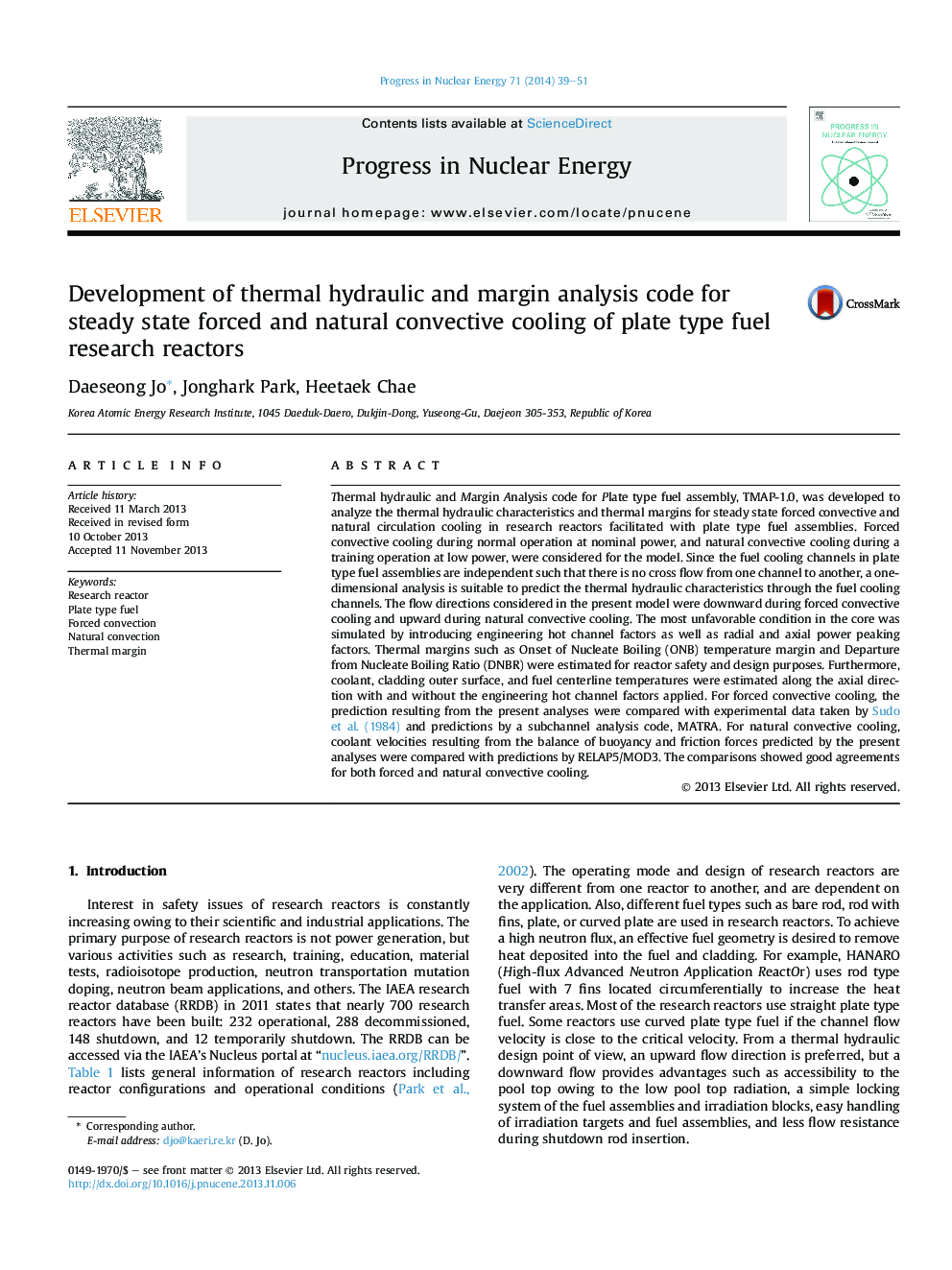| Article ID | Journal | Published Year | Pages | File Type |
|---|---|---|---|---|
| 1740728 | Progress in Nuclear Energy | 2014 | 13 Pages |
•A code was developed to analyze thermal hydraulic behavior of research reactors.•Power and engineering hot channel factors were implemented into the code.•For forced convective cooling, predictions were compared with experimental data.•For natural convective cooling, flow velocity was compared with RELAP prediction.•The comparisons showed good agreements for forced and natural convective cooling.
Thermal hydraulic and Margin Analysis code for Plate type fuel assembly, TMAP-1.0, was developed to analyze the thermal hydraulic characteristics and thermal margins for steady state forced convective and natural circulation cooling in research reactors facilitated with plate type fuel assemblies. Forced convective cooling during normal operation at nominal power, and natural convective cooling during a training operation at low power, were considered for the model. Since the fuel cooling channels in plate type fuel assemblies are independent such that there is no cross flow from one channel to another, a one-dimensional analysis is suitable to predict the thermal hydraulic characteristics through the fuel cooling channels. The flow directions considered in the present model were downward during forced convective cooling and upward during natural convective cooling. The most unfavorable condition in the core was simulated by introducing engineering hot channel factors as well as radial and axial power peaking factors. Thermal margins such as Onset of Nucleate Boiling (ONB) temperature margin and Departure from Nucleate Boiling Ratio (DNBR) were estimated for reactor safety and design purposes. Furthermore, coolant, cladding outer surface, and fuel centerline temperatures were estimated along the axial direction with and without the engineering hot channel factors applied. For forced convective cooling, the prediction resulting from the present analyses were compared with experimental data taken by Sudo et al. (1984) and predictions by a subchannel analysis code, MATRA. For natural convective cooling, coolant velocities resulting from the balance of buoyancy and friction forces predicted by the present analyses were compared with predictions by RELAP5/MOD3. The comparisons showed good agreements for both forced and natural convective cooling.
